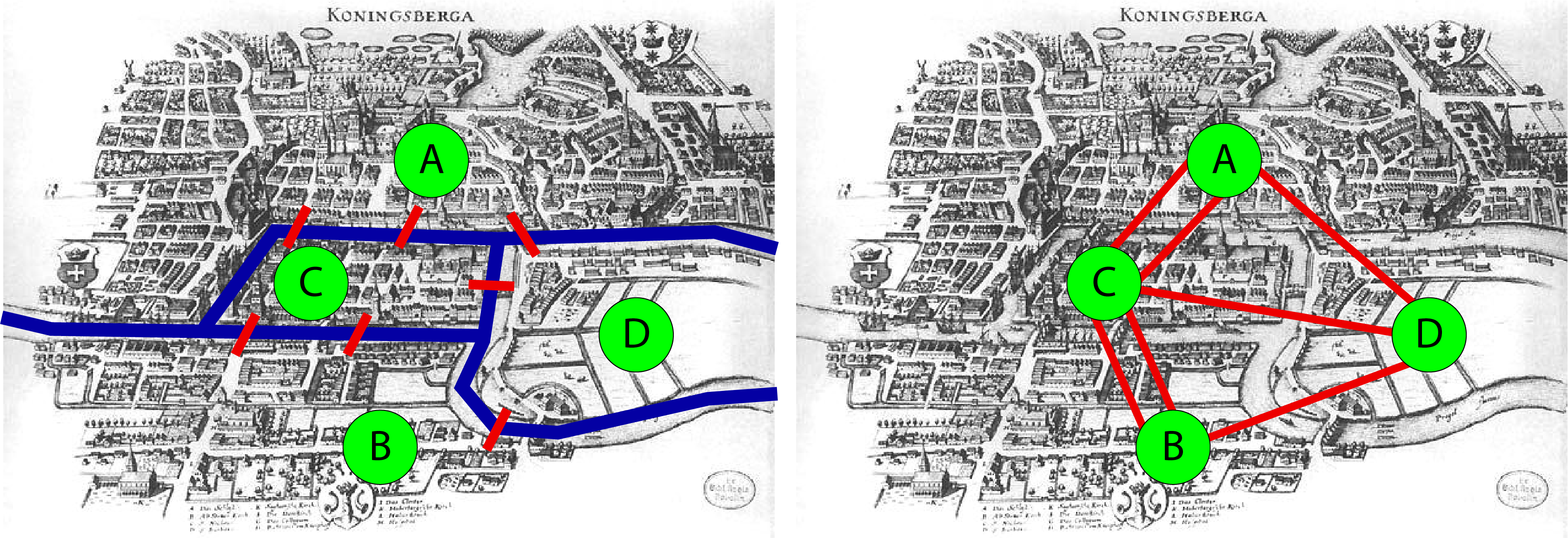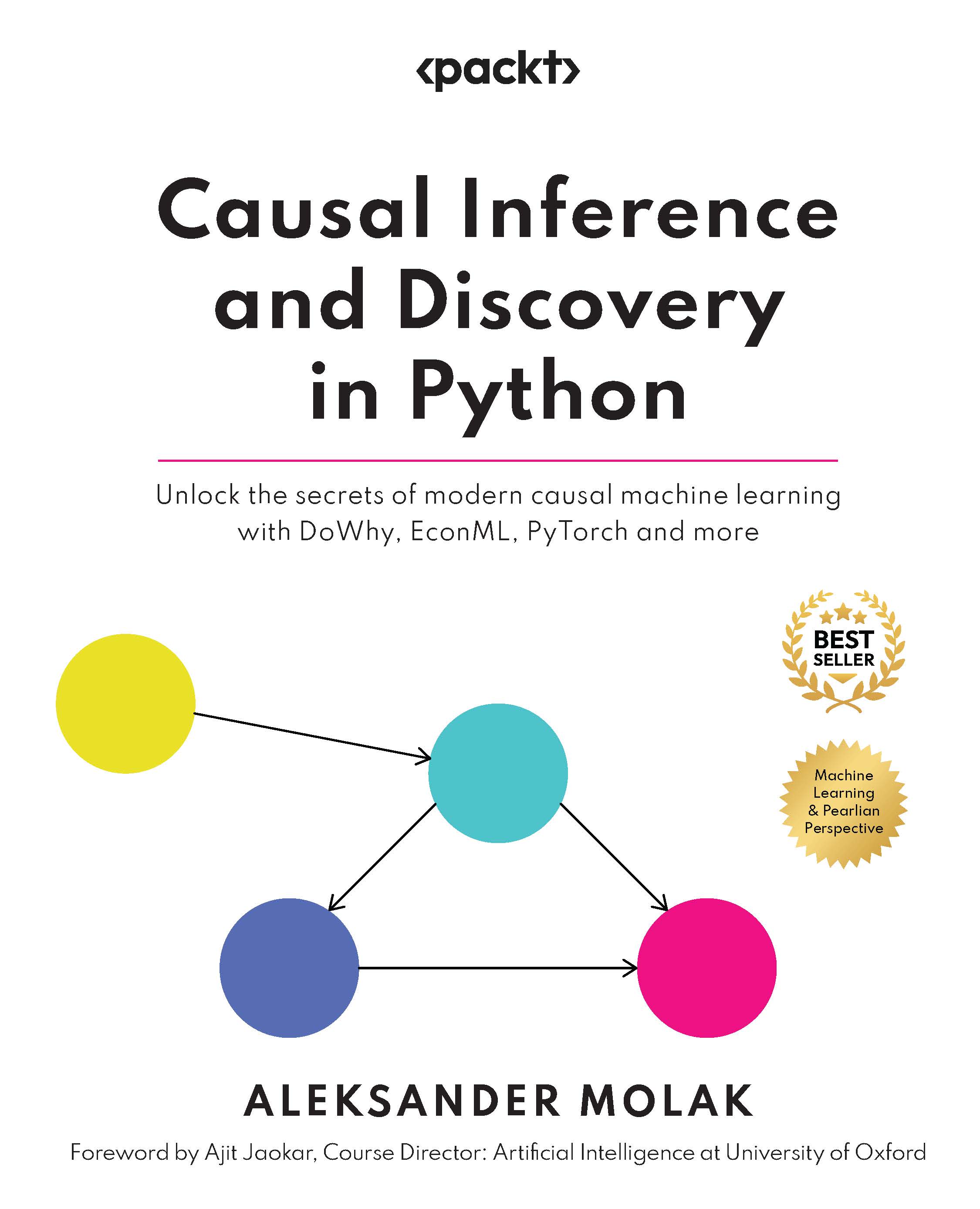Graph studies originate back to Leonhard Euler, a prolific Swiss mathematician who lived in the eighteenth century. In 1735, he published a paper proposing a solution to the Seven Bridges of Königsberg problem. The problem is the following:
Given the city whose geography is depicted in the following image, is there a way to walk across each of the seven bridges of the city once and only once, and return to our starting point?
As you can see, this city is crossed by a river that splits the city into two banks, A and B. The river meander additionally creates two islands, C and D, also part of the city. Those two banks and two islands are connected by a total of seven bridges: two bridges between A and C, two other bridges between C and B, one between C and D, one between B and D, and a last one between D and A:

Euler's reasoning (on the right side) was to reduce this complex geography to the most simple drawing, like the one you can see on the right of the previous image, since the route used within each island is not relevant. Each island then becomes a single point, or node, connected to another by one or several links, or edges, representing the bridges.
With this simple visualization, the mathematician was able to solve the initial problem by noting that, if you arrive at an island (vertex) via one bridge, you will need to leave it using another bridge (except for the start and end vertices). In other words, all vertices but two need to be connected to an even number of relationships. This is not the case in the Königsberg graph, since we have the following:
A: 3 connections (to C twice, and to D once)
B: 3 connections (to C twice, and to D once)
C: 5 connections (to A twice, to B twice and to D once)
D: 3 connections (to A once, to C once and to D once)
This kind of path, where each edge is used once and only once, is called a Eulerian cycle and it can be said that a graph has a Eulerian cycle if and only if all of its vertices have even degrees.
The number of connections for a node is called the degree of the node.
 United States
United States
 Great Britain
Great Britain
 India
India
 Germany
Germany
 France
France
 Canada
Canada
 Russia
Russia
 Spain
Spain
 Brazil
Brazil
 Australia
Australia
 South Africa
South Africa
 Thailand
Thailand
 Ukraine
Ukraine
 Switzerland
Switzerland
 Slovakia
Slovakia
 Luxembourg
Luxembourg
 Hungary
Hungary
 Romania
Romania
 Denmark
Denmark
 Ireland
Ireland
 Estonia
Estonia
 Belgium
Belgium
 Italy
Italy
 Finland
Finland
 Cyprus
Cyprus
 Lithuania
Lithuania
 Latvia
Latvia
 Malta
Malta
 Netherlands
Netherlands
 Portugal
Portugal
 Slovenia
Slovenia
 Sweden
Sweden
 Argentina
Argentina
 Colombia
Colombia
 Ecuador
Ecuador
 Indonesia
Indonesia
 Mexico
Mexico
 New Zealand
New Zealand
 Norway
Norway
 South Korea
South Korea
 Taiwan
Taiwan
 Turkey
Turkey
 Czechia
Czechia
 Austria
Austria
 Greece
Greece
 Isle of Man
Isle of Man
 Bulgaria
Bulgaria
 Japan
Japan
 Philippines
Philippines
 Poland
Poland
 Singapore
Singapore
 Egypt
Egypt
 Chile
Chile
 Malaysia
Malaysia

















